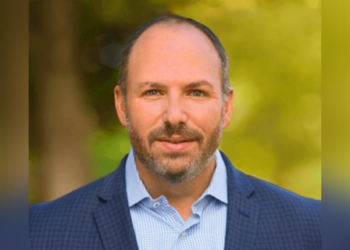As the world enters the third year of the pandemic, employees in the insurance industry expect to maintain workplace flexibility—a hybrid model—even after COVID-19 infection rates dwindle to safe levels.
Now companies will have to navigate this new environment—to find how to maintain employee morale and loyalty while continuing to innovate and attract new talent. Management will have to make decisions about whether to keep expensive buildings in cities across the globe. It’s been called “the new normal,” “flexible working,” “hybrid working,” “agile working” or even the “new better.”
The insurance industry generally coped pretty well from a technical perspective during the pandemic with its remote working arrangements, according to EY Global Insurance Leader Isabelle Santenac, “but we have started to see the impact of working in a remote environment.”
She said the question leaders must grapple with is how to lead teams they rarely see face to face.
A lot of companies saw increasing productivity when they worked remotely “because no time was wasted to take a coffee, to have a long lunch, to get to and from work, etc.,” she said.
At the same time, however, companies have seen a negative impact on innovation—everything that requires teamwork and brainstorming, Santenac added. “How do you encourage your team to innovate when they are not working together?”
While such hybrid or agile working arrangements were part of Gallagher Bassett’s five-year plan before the pandemic, Chief Executive Officer Simon Pemberton said that COVID-19 “accelerated the move to create…work-life balance for the good of both the employee and also of the employer, and also ultimately of the client as well.”
He said that Gallagher Bassett already had the technology in place for working from home even before the pandemic because 25-30 percent of its workforce were using “work-agile arrangements.” He expects that figure to rise to more than 60 percent over the course of the next few years.
The adaptation to remote working during the pandemic often has been called “the new normal,” but Aon CEO Greg Case rejects this characterization as a “corrosive term” because it suggests the new environment for work is “going to be worse, but we have to deal with it.”
“What we found watching client after client after client is something different than the new normal. It was the ‘new-better.’ It was not easier, by the way, but better,” commented Case during an S&P Global Ratings’ insurance conference in June 2021.
He pointed to some of the areas that are creating a new better as a result of changes to industry practices during pandemic lockdowns. The connectivity with clients is up, as is the opportunity for innovation and the opportunity to scale innovation, Case said.
Charles Cooper, chief executive of Reinsurance, AXA XL, acknowledged that there’s a lot of good that has come from the “new better.” At the top of the list of benefits were the industry’s embrace of technology and reducing travel.
“I don’t believe industry travel will ever return to the level that it was prior to the pandemic,” said Cooper, who used to constantly be on the road. In 2021, however, he went on two business trips.
He detailed three reasons he thought travel would never return to old levels. “One, obviously there have been great expense reductions, and the money that’s been saved has been a benefit to companies’ bottom lines. Two, the carbon footprint of corporate travel is going to be more and more important and a part of disclosures for publicly traded companies. And No. 3, the industry finally has realized that technology can work.”
However, Cooper does not believe there will be an end to face-to-face meetings. “But, I think, for some meetings being remote is just easier.”
Further, technology allows companies to access global talent. “If you want to access a more talented and diversified and skilled talent base, what better way to do that than in embracing working remotely?” Cooper said.
“Suddenly you can access talent anywhere in the world, and this talent doesn’t have to be within commuting distance of your office. So that, I think, has been a real benefit.”
At the same time, remote working has improved employees’ work-life balance and freed up a lot more time to spend with their families, if they have long commutes, he said. “However, for some people, working from home is very challenging, for example, for people with young children.”
Hybrid Working Is Here to Stay
Santenac acknowledged that uncertainty about COVID will continue for the foreseeable future for employers and their employees, especially if new variants emerge and governments impose more restrictions.
The only certainty, according to Gallagher Bassett’s Pemberton, is that hybrid working arrangements are here to stay. “We are hiring people and using flexibility as a tool to attract talent into the business and retain talent,” he said.
“Insurance industry employees expect to work remotely most of the time,” according to EY’s “2022 Global Insurance Outlook” report, which recalled findings of its two-part Work Reimagined Survey conducted in 2020 and 2021, of 4,000 employers and employees in 2020 and 16,000 employees in 2021.
“Workers in insurance and banking expressed the highest preference for remote working compared with those in other industries,” said the EY report, which was published in January 2022. “Overwhelming majorities of insurance industry workers say it is important to have flexibility in where they work and when they work. Significant percentages of workers across generations would prefer to be fully remote after the pandemic restrictions are lifted,” the report continued.
“My view is that we will have to manage on-and-off type of work arrangements,” said Santenac, noting, however, that employers must plan for such uncertainties as they organize their return to work.
For example, companies have to determine how they will accommodate both the people who want to return to the office full time and those in the middle, who prefer flexible work arrangements with two or three days a week in the office, she explained.
Decisions will have to be made about how to accommodate a hybrid model, where you have some people in the office and some people not in the office. “If you have a meeting where you have 10 people in the room and 10 people behind the computer screen, that can create some distortions about the importance of each person’s input,” she said.
“The difficulty will be reconciling what is good for you as an employer and what your people believe is good for them.”
Pemberton said that Gallagher Bassett, which is a claims-services provider and subsidiary of Arthur J. Gallagher & Co., is lucky that it has a very wide global and UK footprint. “We work with all parts of Gallagher to ensure that if somebody wants to go into an office and connect, then that facility is available to them.”
He said that employees generally fit into three categories:
- Those who are very well established at home and possibly predominantly worked from home even before the pandemic period. These people have the right technology, the right space for a home office “and many are the more seasoned employees…”
- Those who can’t work from home. This can be for physical reasons in that they just don’t have the room or the right space, or they thrive in an office environment. “You have to keep that option going for this group of employees.”
- Those who work within the hybrid model on a rotational basis. “There are lots of people in that space, so we just have to make sure we deliver the hardware to allow them to do that,” Pemberton said. “You don’t want to be duplicating the hardware and the cost associated with hybrid working, but similarly, you do want to give them enough flexibility that maximizes loyalty to the business and help junior team leaders learn their trade.”
In general, the industry will have to find ways to make this work over the course of the next two to three years, he said. “Mistakes will be made; it’s just important that we quickly learn from those mistakes.”
Whatever arrangement a company makes, Santenac emphasized that regular communication with employees, both individually and with the team, is essential—via email, online and in-person meetings (if possible), and phone calls. “That also helps detect if some people need help—because some people do need help today. It can be very difficult for some employees to be so isolated.”
Indeed, Santenac cautioned that it’s important that companies and managers consider the mental health of employees who continue to work remotely because “some people have had difficulties adapting to this long time frame, to working from home and not seeing people and not having a social life.”
“We always talk in the insurance industry about customer centricity, the customer experience. I think the [COVID] crisis also highlighted the importance of the employee experience. The insurance industry is quite traditional and so it has had to reinvent ways of working,” she said.
Remote work conditions vary widely, she explained. “If you live in a very small apartment, or if you live with a friend or you have small children who couldn’t go to school, it’s more difficult to work from home.”
Nevertheless, Santenac said, the proportion of people who don’t want to come back to the office full time is quite high.
“Even at EY, we have a percentage of people who say, ‘I would like to stay at home almost 100 percent of the time.’” And a lot of EY’s clients are indicating they have approximately 20-30 percent of people who don’t want to return full time to their offices, she added.
“When I hear people say, ‘I don’t want to come back to the office anymore,’ that raises some questions for me about how engaged are those people. How can they contribute at the best level if they never meet with people they are working with?” Santenac questioned.
Cooper said his company probably has an equal split between employees who are “dying to get back in the office and those who are really happy with work-from-home.”
“There will be a spectrum of approaches for the new normal, ranging from a requirement that everyone has to be in the office five days a week to those companies that go completely remote,” he said. “I think it’s going to vary by company and certainly by industry.”
Keeping Strong Corporate Culture
Creating the right work environment is a big part of creating successful hybrid working arrangements, industry experts agree.
The insurance industry, in particular, remains largely a relationship-driven business and a people business, Cooper emphasized. “As a result, corporate culture is a very critical part of differentiating companies.”
He explained that it’s easier to maintain corporate culture with remote teams over the short term— for example, during the pandemic lockdowns.
“You have the stability of the management team, and you have people that have worked at the company for a long time and understand what the corporate culture is and what the expectations are,” Cooper said. “I think it’s much more difficult over time as you bring in new employees and hire new employees in a remote working environment. It is very, very difficult to then instill the corporate culture.”
While most companies have written definitions of what their corporate culture is, Cooper said, it actually is “something you feel by going to a company and experiencing the way people interact with each other, treat each other, and interact with clients and brokers. And it’s the way that things are done in the company. It’s very hard to get a feel for that remotely.”
To maintain the corporate culture during the pandemic, Cooper said he has made an effort to do more town halls, global town halls and activities “where we communicate broadly with our staff and try to do that as much as possible.”
This is good for the short term, but for the long term, particularly for new employees, that’s a very difficult thing to figure out. “How do new joiners learn the corporate culture when working remotely?” Cooper said that all companies will have to figure out how to make this work.
It is much more difficult to get to know people remotely, he noted. “Spending time with your team is a way to do that. I think it’s more difficult to work remotely for new joiners or people new to the business and the industry versus people with established relationships.”
In a relationship-driven business such as insurance, companies will have to find a way to maintain their corporate culture while developing relationships in a relationship business, he emphasized. “Corporate culture is the bit that people have to think really deeply around: How do companies establish and maintain and have that corporate culture thrive in whatever work situation they choose? Because if you lose that, then you are completely indistinct from the rest of the capital in our business.”
Developing Talent
There is no doubt that corporate culture is the key to employee retention, said Pemberton, who has been with Gallagher Bassett for more than 21 years. It is “absolutely vital” for team leaders to maintain a continual connection to teams working in hybrid and remote working arrangements, he added.
This is particularly important for the development of the new generation of employees joining the company, who get intensive onboarding in their first two weeks. Gallagher Bassett also provides remote and in-person learning so young employees can continue to enhance their qualifications as they advance in their careers.
“There is nothing better than actually having the physical connection on a training course and people learning together, so that is a really important part of our plan as we get used to this ‘new normal.’”
Trainees must get the experience “of sitting within the business to ensure that knowledge is passed on,” Pemberton said, explaining that one-to-one training on an ongoing basis is important, whether it’s conducted face-to-face or virtually.
“Early in my career, I think of the amount of times I was sitting next to a qualified lawyer who was there to advise me on a natural basis,” he added. “From a technological point of view, we still need development in that area to be able to replicate that experience, whatever that looks like, in a more remote and agile working environment.”
Cooper said “learning through osmosis” is particularly important for young underwriters, who must learn how to deliver difficult messages to a client or a broker. “Overhearing a more senior underwriter delivering a message in a way that is thoughtful and careful is extremely valuable. You just—you lose that by working remotely.”
Decisions About Real Estate
Companies ultimately will be able to cut costs by reducing the size of their offices and headquarters. For example, Lloyd’s of London is reportedly reviewing its real estate needs at its London headquarters as embraces flexible working by allowing underwriters to appear certain days a week at their offices or in the underwriting room. As early as April 2020, Nationwide in the U.S. decided to make remote work permanent in five states, exiting most buildings outside of four main campuses.
Pemberton speculated that most businesses are probably examining the costs of real estate and how efficiencies can be made in a post-COVID environment. “But I urge our executives to be cautious about [quick decisions] until we determine exactly what this new normal means,” he continued.
“I’m slightly still old-fashioned about the importance of physical connection with people, which is a very important part of employee development and also for the culture of the business,” he said.
It would be easy for a CEO to decide that office space needs to be downsized and then suddenly find that changes to the cultural environment require more space, said Pemberton, explaining that more people might want to return to the office after COVID rates continue declining.
“I’m very passionate about getting this right and not rushing at 100 million miles per hour, without a very considered plan over the course of the next three to five years. Don’t let short-term savings, in areas such as real estate, drive decision-making,” he said. “First have a plan and then consider the savings around that. Don’t let the savings lead the plan.”
At AXA XL, Cooper said, “Quite often, the corporate headquarters can be the face of the organization and the community. So, shareholders and all stakeholders are invested in that.”
“Companies need to think about that when they make these decisions,” he said. Like Pemberton, Cooper also addressed the need for insurers to adjust their real estate footprints with other factors in mind.
“It’s going to be dependent on the approach that each company takes in terms of evaluating their corporate culture, evaluating how they’re going to approach hybrid working, whether or not they allow remote working, or if they want everybody in the office,” Cooper said.
This article first was published in Insurance Journal’s sister publication, Carrier Management.









